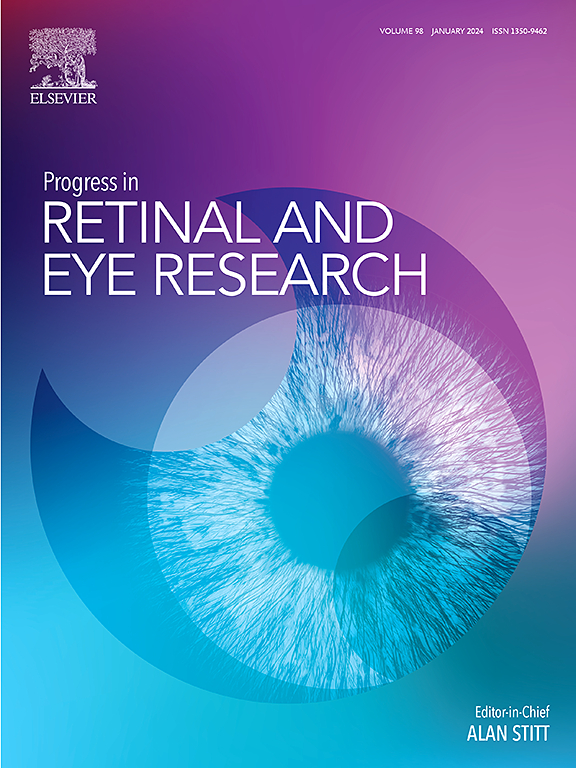CRISPR/Cas9治疗遗传性视网膜疾病
IF 14.7
1区 医学
Q1 OPHTHALMOLOGY
引用次数: 0
摘要
遗传性视网膜疾病(IRDs),如色素性视网膜炎,是一类以光感受器变性为特征的异质性遗传性眼病。它们是高收入国家工作年龄人口失明的主要原因,也是不断扩大的基因编辑工具包(包括快速发展的CRISPR/Cas9技术)的理想目标。在这篇综述中,我们全面分析了目前正在探索的CRISPR/Cas9技术作为IRDs的治疗干预措施。考虑到基因编辑系统日益复杂和庞大所带来的挑战,将这些治疗方法输送到视网膜需要创新的方法。我们回顾了目前的递送方法,包括纳米颗粒、病毒样颗粒和传统的病毒载体,并强调了它们的优点和局限性。这篇综述强调了基因编辑对遗传病管理的潜在变革性影响,强调了这些技术的进步,加上改进的临床前模型,为ird带来了临床安全和有效的治疗方法。本文章由计算机程序翻译,如有差异,请以英文原文为准。
Shining light on CRISPR/Cas9 therapeutics for inherited retinal diseases
Inherited retinal diseases (IRDs), such as retinitis pigmentosa, are a heterogenous group of genetic eye diseases characterized by degeneration of photoreceptors. They are the leading cause of blindness in the working age population in high-income countries and are an ideal target for the expanding gene editing tool kit, including rapidly evolving CRISPR/Cas9 technology. In this review, we provide a comprehensive analysis of CRISPR/Cas9 technologies currently being explored as therapeutic interventions for IRDs. Given the challenges posed by the growing complexity and size of gene editing systems, the delivery of these therapeutics to the retina has necessitated innovative approaches. We review current delivery methods, including nanoparticles, virus-like particles and traditional viral vectors, highlighting their advantages and limitations. This review underscores the potential transformative impact of gene editing on genetic disease management, emphasising that advancements in these technologies, coupled with improved pre-clinical models, bring clinically safe and effective treatments for IRDs within view.
求助全文
通过发布文献求助,成功后即可免费获取论文全文。
去求助
来源期刊
CiteScore
34.10
自引率
5.10%
发文量
78
期刊介绍:
Progress in Retinal and Eye Research is a Reviews-only journal. By invitation, leading experts write on basic and clinical aspects of the eye in a style appealing to molecular biologists, neuroscientists and physiologists, as well as to vision researchers and ophthalmologists.
The journal covers all aspects of eye research, including topics pertaining to the retina and pigment epithelial layer, cornea, tears, lacrimal glands, aqueous humour, iris, ciliary body, trabeculum, lens, vitreous humour and diseases such as dry-eye, inflammation, keratoconus, corneal dystrophy, glaucoma and cataract.

 求助内容:
求助内容: 应助结果提醒方式:
应助结果提醒方式:


